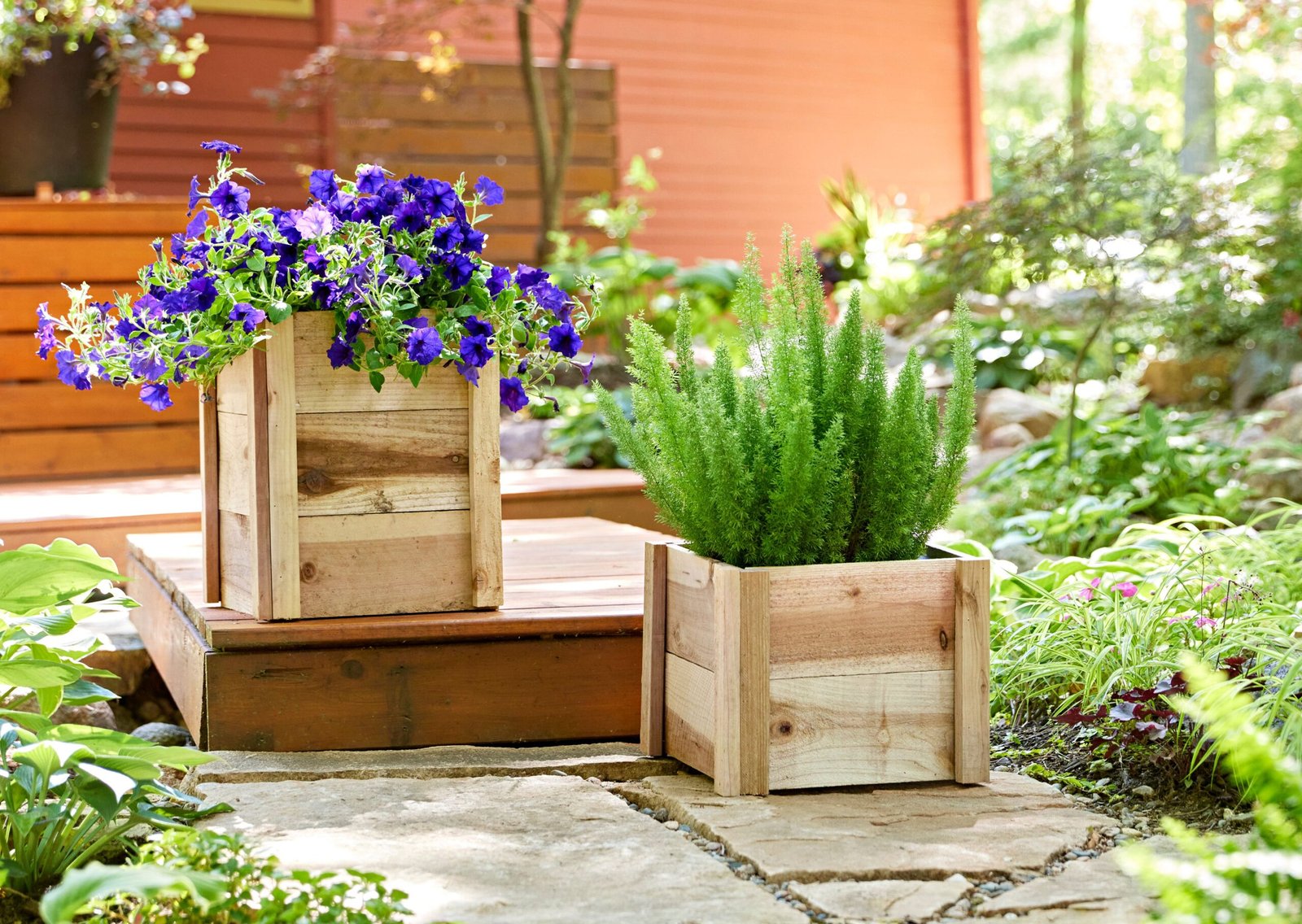Outdoor projects are a fantastic way to get kids excited about nature and creativity. When children engage in outdoor projects, they learn new skills and have fun at the same time. Whether it’s planting flowers or building a fort, outdoor projects help kids explore their imagination while enjoying the fresh air.
This spring, why not inspire your children to take on an outdoor project? With a little guidance, they can learn to plan, create, and see their ideas come to life. Not only will this boost their confidence, but it will also teach them important lessons about teamwork and responsibility.

The Joy of Outdoor Projects: Why Kids Love to Create
Outdoor projects are a great way for kids to express their creativity while having fun in nature. Children love to create things, and when they can do this outside, they feel free and excited. The fresh air and sunshine make any activity more enjoyable. Whether it’s painting rocks or building a small garden, outdoor projects help kids explore their imaginations.
Benefits of Outdoor Projects:
- Fun Learning: Kids learn by doing things, and outdoor projects let them experiment.
- Exploration: They get to discover new things in nature, like plants and animals.
- Teamwork: Working on projects with friends or family teaches them to share and cooperate.
By encouraging kids to dive into outdoor projects, parents can help them develop a lifelong love for creativity. It’s not just about building or making; it’s about enjoying the process and learning along the way.
How Outdoor Projects Build Independence and Confidence
Taking on an outdoor project allows children to be responsible for their work. When kids lead a project, they learn to make decisions and solve problems. For example, if they decide to plant a garden, they must choose what flowers or vegetables to grow. This responsibility builds their confidence because they see that their choices matter.
Skills Gained from Leading Projects:
- Decision-Making: Kids learn to choose the best options for their project.
- Problem-Solving: They face challenges, like bad weather, and learn to find solutions.
- Time Management: Completing a project teaches them how to plan and stick to a schedule.
When children successfully complete their outdoor projects, they feel proud of their accomplishments. This pride boosts their self-esteem and encourages them to try new things in the future.
Creative Outdoor Projects for Every Age Group
Outdoor projects can be tailored to suit kids of all ages. Younger children might enjoy simple activities like creating nature crafts, while older kids can tackle more complex tasks like building a treehouse or designing a backyard obstacle course. The key is to match the project to their skill level to keep them engaged.
Ideas for Different Age Groups:
- Toddlers (2-4 years):
- Painting with natural materials (like leaves and stones)
- Simple scavenger hunts to find different colored flowers
- Preschoolers (4-5 years):
- Making a bird feeder using pine cones and peanut butter
- Planting easy-to-grow seeds like sunflowers or beans
- School-Aged Kids (6-12 years):
- Building a bug hotel to attract and learn about insects
- Creating a small vegetable garden to learn about growing food
These projects not only encourage creativity but also promote learning through hands-on experiences.
Step-by-Step Guide to Planning an Outdoor Project with Kids
Planning an outdoor project can be a fun activity for the whole family. It starts with choosing a project that excites the kids. Once you have a project in mind, it’s time to gather the materials. Make a list of what you need, and let the kids help collect them. This involvement makes them feel included and responsible.
Steps to Follow:
- Choose a Project: Decide together on what to create or build.
- Gather Materials: Create a list and gather everything needed for the project.
- Set a Schedule: Plan when to start and how much time each part will take.
- Start Creating: Let the kids take charge while you provide support and guidance.
By involving kids in the planning process, they learn essential skills and feel proud of their contributions. It also strengthens family bonds as you work together towards a common goal.
This dynamic four-night, five-day experience unites three classes from schools that differ socioeconomically, racially, and ethnically. This immersive, experiential education program places students in diverse groups within a neutral setting and directly addresses issues of difference while building self-esteem and community.
Safety Tips for Outdoor Projects: Keeping Kids Safe While They Create
While outdoor projects are a lot of fun, safety should always come first. Before starting any project, parents must ensure the area is safe for children to play and work in. This means checking for sharp objects, hazardous materials, or dangerous plants in the area.
Important Safety Guidelines:
- Supervision: Always supervise young children while they work on outdoor projects.
- Sun Protection: Make sure kids wear sunscreen and hats to protect from the sun.
- Proper Tools: Use age-appropriate tools and teach kids how to handle them safely.
By following these safety tips, parents can ensure that their children enjoy their outdoor projects without any accidents.
Nature-Inspired Outdoor Projects: Connecting Kids with the Environment
Nature-inspired outdoor projects help children connect with the environment around them. By learning about plants, animals, and ecosystems, kids develop a sense of respect for nature. This respect can lead to lifelong habits of environmental stewardship.
Ideas for Nature-Inspired Projects:
- Planting Native Flowers: Teach kids about local wildlife and the importance of native plants.
- Building Insect Hotels: Encourage kids to learn about the role of insects in our ecosystem.
- Nature Art: Collect natural items like leaves and flowers to create beautiful art pieces.
These projects not only engage kids but also teach them valuable lessons about the world we live in. By fostering this connection to nature, children grow into caring and responsible adults.
The Benefits of Outdoor Projects for Child Development
Outdoor projects provide numerous benefits for child development. Engaging in creative activities outside can improve physical, social, and emotional skills. Children get to move around, use their hands, and express their feelings through art and creation.
Key Benefits Include:
- Physical Development: Climbing, digging, and running during projects help kids develop strength and coordination.
- Social Skills: Collaborating on projects teaches kids how to work with others.
- Emotional Growth: Completing a project boosts confidence and provides a sense of accomplishment.
By participating in outdoor projects, children learn important life skills that will benefit them in many areas, including school and friendships.
Sustainable Outdoor Projects: Teach Kids About the Environment
Teaching children about sustainability through outdoor projects is an excellent way to instill eco-friendly values. Kids can learn how their actions impact the environment, making them more conscious of their choices. Projects like recycling materials or creating compost bins can be both fun and educational.
Sustainable Project Ideas:
- Composting: Teach kids how to compost food scraps to create rich soil for gardening.
- Upcycling: Use old items to create new art projects, promoting creativity and recycling.
- Gardening with Purpose: Grow vegetables or flowers that support local wildlife, like pollinators.
These sustainable practices help children understand the importance of taking care of the Earth and can inspire them to make positive changes in their daily lives.
Celebrating Your Child’s Outdoor Project: Showcasing Their Creativity
Once your child has completed their outdoor project, it’s important to celebrate their hard work. Recognizing their effort boosts their self-esteem and encourages them to take on future projects. You can organize a small family gathering or a display day to showcase their creations.
Ways to Celebrate:
- Host a Mini Exhibition: Invite family and friends to see the completed project.
- Take Photos: Capture moments throughout the project and share them.
- Create a Certificate: Make a fun certificate to honor their achievement.
Celebrating their accomplishments not only validates their efforts but also creates lasting memories of creativity and collaboration.
Conclusion
In conclusion, outdoor projects are a wonderful way for kids to learn and have fun at the same time. By taking part in these activities, children build important skills like creativity, independence, and teamwork. They also get to enjoy nature and spend time outside, which is great for their health. Parents can help their kids choose fun projects and guide them along the way, making it a fun family experience.
Encouraging kids to explore and create through outdoor projects is not just about having fun; it’s about helping them grow. When children complete their projects, they feel proud and confident. So this spring, let your kids dive into exciting outdoor projects and watch them shine!
FAQs
Q: What are some easy outdoor projects for kids?
A: Easy outdoor projects include planting flowers, making a bird feeder, or creating nature art with leaves and sticks.
Q: How can outdoor projects help my child?
A: Outdoor projects help kids develop creativity, problem-solving skills, and confidence while enjoying nature.
Q: What materials do I need for outdoor projects?
A: You might need items like soil, seeds, paint, wood, or recycled materials, depending on the project.
Q: Are outdoor projects safe for young children?
A: Yes, outdoor projects can be safe if parents supervise and choose age-appropriate activities and tools.
Q: How can I encourage my child to take on an outdoor project?
A: Show excitement about outdoor projects, offer choices, and participate together to make it fun and engaging!










